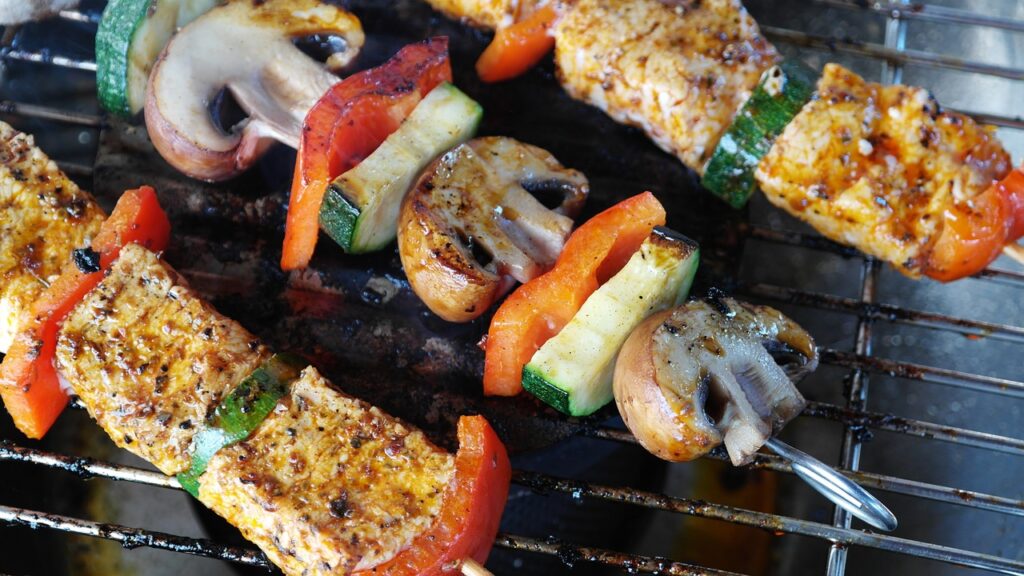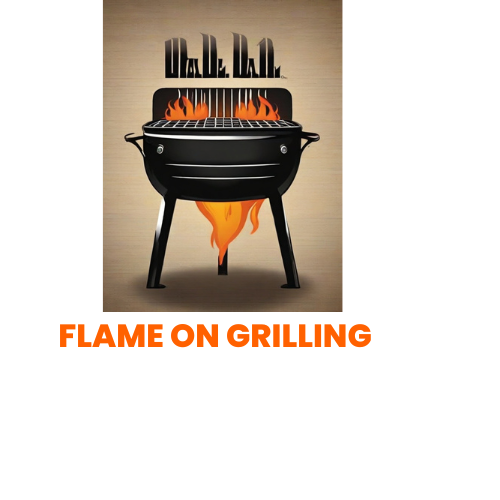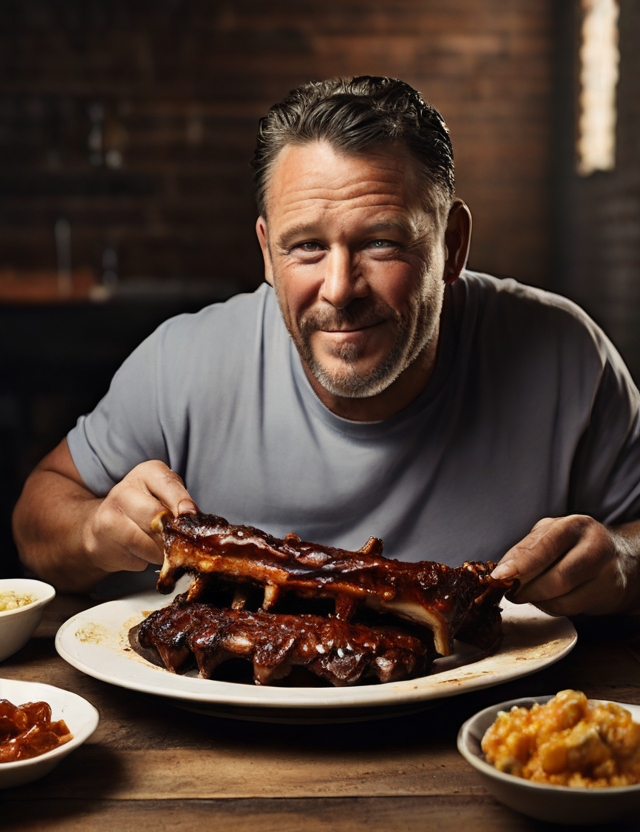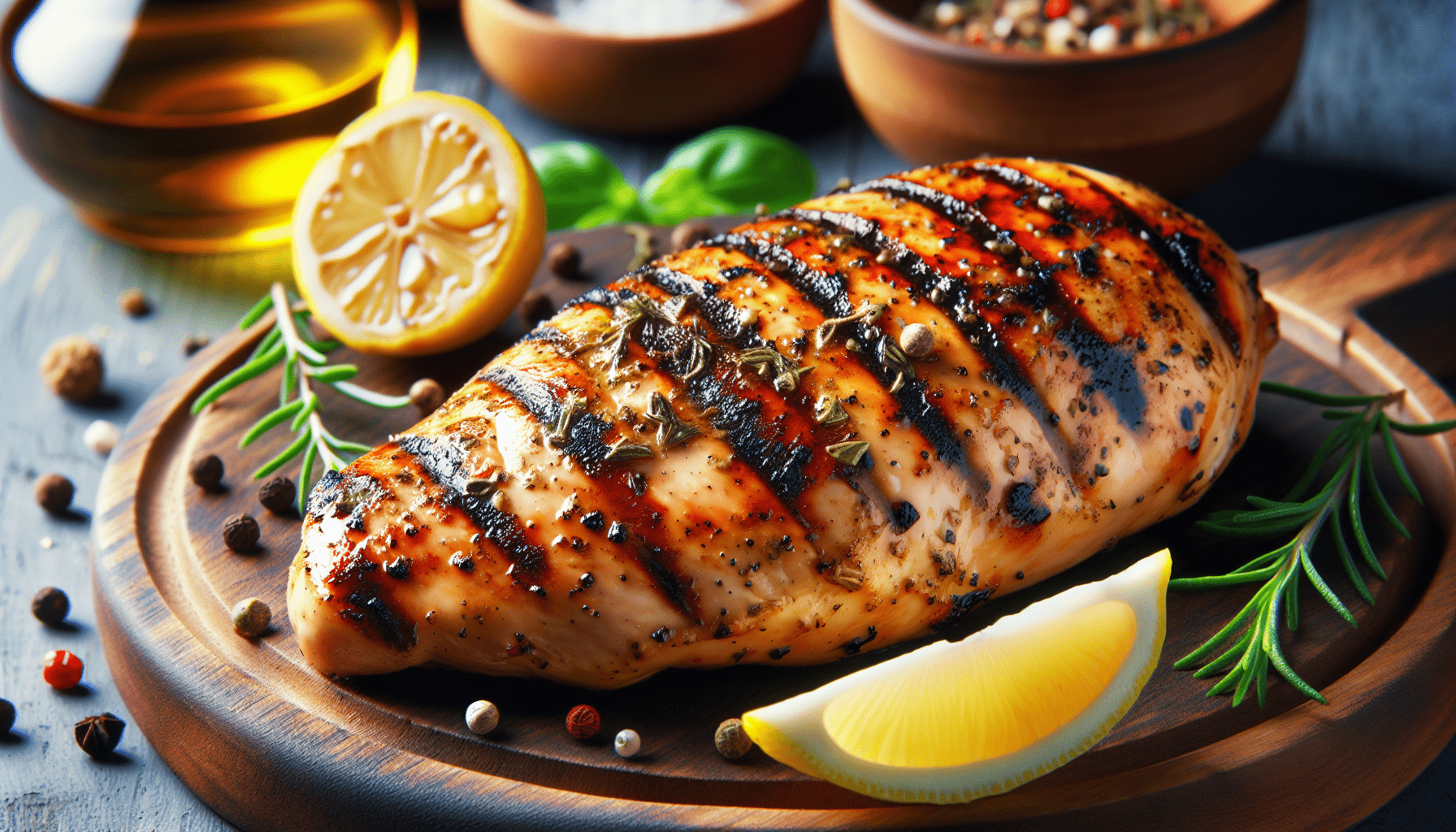Are you ready to embark on an epic grilling journey? Look no further! In this ultimate guide, we will unravel the secrets to perfectly grilled ribs. From choosing the right cut of meat to mastering the art of seasoning, we’ve got you covered. So grab your apron, fire up the grill, and get ready to indulge in mouthwatering, fall-off-the-bone ribs. With our expert tips and techniques, you’ll become a grilling maestro in no time. It’s time to elevate your outdoor cooking game and wow your family and friends with the most tender and flavorful ribs they have ever tasted. Let’s get grilling!
Choosing the Ribs
When it comes to choosing the perfect ribs for grilling, you have a few options to consider. Baby back ribs, spareribs, and St. Louis style ribs are all delicious choices, each with their own unique characteristics.
Baby Back Ribs
Baby back ribs are the go-to choice for many grill enthusiasts. These ribs come from the top of the rib cage and are known for their tenderness and lean meat. They are typically smaller in size compared to other types of ribs, making them perfect for smaller gatherings or those who prefer individual servings. Baby back ribs have a slightly sweeter flavor profile and are a great option for those who enjoy a more delicate taste.
Spareribs
Spareribs, on the other hand, come from the lower part of the rib cage and are known for their juiciness and rich flavor. These ribs have more fat and connective tissue, which results in a moist and flavorful end result. Spareribs are larger in size and have more meat on the bones, making them a great choice for those who prefer a heartier portion. They are often a favorite among barbecue lovers due to their robust taste and versatility in flavoring.
St. Louis Style Ribs
St. Louis style ribs are a variation of spareribs that have been trimmed to a more rectangular shape. These ribs are meatier and offer a balance between the lean baby back ribs and the fatty spareribs. St. Louis style ribs are perfect for those who enjoy a substantial serving of meat, and they are popular in competition barbecue circles due to their uniformity in size and shape.
Preparing the Ribs
Properly preparing the ribs before grilling is crucial for achieving the best results. This involves trimming the ribs, removing the membrane, and seasoning them to enhance their flavor.
Trimming the Ribs
Before cooking the ribs, it’s essential to trim off any excess fat and silver skin. This allows the seasoning and smoke to penetrate the meat better and ensures more even cooking. Use a sharp knife to carefully remove any visible fat and the tough membrane on the bone side of the ribs.
Removing the Membrane
The membrane, also known as the silverskin, is a tough layer on the bone side of the ribs that can prevent flavors from fully permeating the meat. It’s important to remove this membrane to ensure tender and delicious ribs. Start by loosening one corner of the membrane with a butter knife or your fingers, then grab hold of it with a paper towel for better grip and peel it off in one smooth motion.
Seasoning the Ribs
Seasoning is key to enhancing the flavor of your ribs. You can keep it simple with a basic mix of salt, pepper, and your favorite herbs and spices, or get creative with a homemade dry rub or marinade. Whether you prefer a sweet and sticky glaze or a spicy rub, make sure to generously coat both sides of the ribs and let them marinate for at least 30 minutes, or even overnight, to allow the flavors to develop.

Grilling Equipment
Having the right grilling equipment can make a significant difference in the outcome of your rib grilling adventure. While there are various types of grills to choose from, each with its own advantages, the most common options for grilling ribs are charcoal grills, gas grills, and smoker grills.
Charcoal Grill
Cooking ribs on a charcoal grill adds a smoky and authentic flavor that many barbecue enthusiasts crave. Charcoal grills offer precise temperature control and allow for more versatile cooking styles, such as direct grilling for a quick sear or indirect grilling for low and slow cooking. They require a bit more hands-on attention and patience, but the end result is often worth the extra effort.
Gas Grill
Gas grills provide convenience and ease of use, making them a popular choice for many grillers. They offer quick and consistent heat, perfect for those who want to grill ribs without the hassle of charcoal or wood. With a gas grill, you can easily control the temperature and cook ribs using either direct or indirect heat methods. Gas grills are great for beginner grillers or those who prefer a more straightforward grilling experience.
Smoker Grill
If you truly want to take your rib grilling to the next level, a smoker grill is the way to go. These grills are designed specifically for slow cooking and infusing the meat with rich smoky flavors. Smoker grills use charcoal or wood as the fuel source, creating a steady low-temperature environment that allows the ribs to cook slowly and develop a tender texture. While smoker grills may require more time and practice to master, the unmatched smoky taste they provide is well worth it for barbecue enthusiasts.
Grilling Tools
Regardless of the type of grill you choose, having the right grilling tools is essential for a successful grilling experience. Invest in a pair of sturdy long-handled tongs and a spatula for easy flipping and handling of the ribs. A meat thermometer is also a must-have tool to ensure your ribs reach the perfect level of doneness. Additionally, consider using grilling gloves to protect your hands from the heat and a grill brush for easy cleanup.
Setting Up the Grill
Before you start grilling your ribs, it’s important to set up your grill properly to achieve the best results. This involves understanding the difference between direct and indirect heat, preheating the grill, and adding smoke for extra flavor.
Direct Heat vs Indirect Heat
Direct heat refers to grilling the ribs directly over the heat source, while indirect heat involves placing the ribs to the side of the heat source, creating a more gentle and slow cooking environment. Both methods have their advantages, depending on the desired outcome. Direct heat is ideal for achieving a crispy exterior and quick cooking, while indirect heat is perfect for low and slow cooking, allowing the ribs to become tender and develop a rich smoky flavor.
Preheating the Grill
Properly preheating your grill is essential for even cooking and preventing the ribs from sticking to the grates. For charcoal grills, allow the coals to fully ash over before placing the ribs on the grates. This usually takes about 15-20 minutes. Gas grills require preheating as well. Simply turn on the burners to the desired temperature and let them heat up for about 10-15 minutes. Smoker grills also need preheating, allowing the temperature to stabilize before adding the ribs.
Adding Smoke for Flavor
Adding smoke to your ribs can take their flavor to a whole new level. If you’re using a charcoal or smoker grill, you can simply add soaked wood chips or chunks directly on top of the charcoal to create smoke. Popular wood options for smoking ribs include hickory, apple, cherry, and mesquite, each adding their unique flavors. Gas grills can also produce smoke by using a smoker box or aluminum foil packet filled with soaked wood chips placed near the burners.

Grilling Techniques
Grilling ribs requires different techniques depending on the desired cooking style and preferences. Whether you prefer the low and slow method, high heat method, or the time-tested 2-2-1 method, each technique has its own advantages and can result in delicious ribs.
Low and Slow Method
The low and slow method involves cooking the ribs over indirect heat at a consistent low temperature for an extended period. This technique allows the collagen in the ribs to break down slowly, resulting in tender and juicy meat. To achieve this, maintain a temperature of around 225-250°F (107-120°C) and cook the ribs for several hours. This method is perfect for those who enjoy fall-off-the-bone ribs with a rich smoky flavor.
High Heat Method
If you’re short on time or prefer a different texture, the high heat method may be more suitable for you. This technique involves grilling the ribs directly over high heat, giving them a crispy exterior while still maintaining tenderness. Start by searing the ribs over direct heat for a few minutes on each side to lock in the juices, then move them to indirect heat to finish cooking. The high heat method is great for those who prefer a slightly chewier texture and a quicker grilling process.
Using the 2-2-1 Method
The 2-2-1 method is a popular technique that combines the best of both worlds – low and slow cooking followed by a high heat finish. It involves cooking the ribs over indirect heat for 2 hours, then wrapping them tightly in foil with a liquid of your choice, such as apple juice or barbecue sauce, and cooking them for an additional 2 hours. Finally, unwrap the ribs and place them over direct heat for the final 1 hour, allowing them to develop a delicious caramelized crust. This method is perfect for achieving both tender and flavorful ribs.
Monitoring and Controlling Temperature
Grilling ribs to perfection requires careful monitoring and control of the temperature throughout the cooking process. This ensures that the ribs cook evenly and reach the desired level of doneness.
Using a Grill Thermometer
A grill thermometer is an indispensable tool for monitoring the temperature of your ribs. It allows you to accurately measure the internal temperature without needing to cut into the meat. Insert the probe of the thermometer into the thickest part of the meat, being careful to avoid touching the bone, and refer to a temperature chart to determine the desired doneness.
Managing Heat Zones
Understanding heat zones on your grill is essential for controlling the cooking process. With a charcoal grill, you can create different heat zones by placing more or fewer coals on one side of the grill. For a gas grill, adjust the burners to create a high-heat zone and a low-heat zone. This way, you can move the ribs between the zones as needed to control the cooking speed and prevent overcooking or burning.
Adjusting Vents and Dampers
Most grills have vents or dampers that allow you to adjust the airflow and therefore control the temperature. Opening the vents increases the airflow and raises the temperature, while closing them reduces the airflow and lowers the temperature. Experiment with adjusting the vents or dampers to find the right temperature for your cooking style and the ribs you’re grilling.

Basting and Saucing
Basting and saucing your ribs can add an extra layer of flavor and moisture. Knowing when to baste, choosing the right sauce, and applying it properly can make a significant difference in the taste and presentation of your grilled ribs.
When to Baste
Basting is the process of applying a liquid such as marinade, sauce, or butter to the ribs during the cooking process. It should be done at the appropriate time to prevent the sauce from burning and to allow it to adhere to the meat properly. Begin basting the ribs with your preferred sauce in the final 30 minutes to 1 hour of the cooking time, depending on the thickness of the sauce and the desired glaze.
Choosing the Right Sauce
The choice of sauce can greatly influence the flavor of your ribs. Whether you prefer a tangy vinegar-based sauce, a sweet and sticky barbecue sauce, or a spicy kick of hot sauce, there is a wide array of options to choose from. You can use store-bought sauces or experiment with homemade recipes. Consider matching the sauce to your desired flavor profile and complementing the seasoning on the ribs for a harmonious taste experience.
Applying the Sauce
When applying the sauce, use a basting brush or a clean brush with heat-resistant silicone bristles to evenly distribute the sauce on both sides of the ribs. Apply a thin layer and allow it to caramelize on the surface before adding additional coats. Be careful not to apply too much sauce at once, as it can cause the ribs to become overly saucy and lose their desired texture. Reserve some sauce for serving on the side to accommodate different preferences.
Testing Doneness
Determining when the ribs are perfectly cooked can be a challenge, especially for beginners. There are several methods you can employ to ensure your ribs are done to perfection.
Visual Clues
Visual cues can help you gauge the doneness of your ribs. Look for the meat to have pulled back slightly from the bone ends, revealing about half an inch of bone. The meat should also appear juicy and have a nice caramelized crust. Lastly, check for shrinkage in the meat and bones. If the meat has pulled away significantly from the bone and the ends are exposed, it’s a good indication that the ribs are done.
Bend Test
The bend test is a simple yet effective method to determine if your ribs are tender enough. Use tongs to pick up one end of the rack and allow it to sag. The ribs should bend easily and the meat should start to crack slightly, but it should not be falling off the bone completely. If the rack bends with just the right amount of resistance, it’s a good sign that the ribs are perfectly cooked.
Internal Temperature
To ensure the ribs are cooked to a safe internal temperature, use a meat thermometer to measure the temperature in the thickest part of the meat, away from the bone. For baby back ribs, the internal temperature should reach about 190-205°F (88-96°C), while spareribs and St. Louis style ribs should reach around 180-195°F (82-91°C). Keep in mind that the temperature will continue to rise slightly during the resting period.
Resting and Serving
Resting the ribs after grilling is an essential step for allowing the juices to redistribute and the meat to relax, resulting in a more tender and flavorful eating experience. Once the ribs have rested, it’s time to cut and serve them with your favorite sauces and accompaniments.
Resting the Ribs
Resting the ribs allows the juices to settle and the temperature to stabilize. Tent the cooked ribs loosely with foil and let them rest for about 10-15 minutes. This resting period helps to ensure that the meat retains its juiciness and tenderness, as cutting into the ribs too soon can cause the juices to escape and result in drier meat.
Cutting and Serving
When it’s time to cut the ribs, place them on a cutting board with the bone side facing up. Use a sharp knife to carefully separate the individual ribs by cutting between the bones. For baby back ribs, you can typically cut between each bone, creating individual servings. For spareribs and St. Louis style ribs, you can choose between cutting them into individual ribs or leaving them in larger portions for sharing. Serve the ribs with your chosen sauces and accompaniments for a mouthwatering meal.
Sauces and Accompaniments
Ribs pair well with a variety of sauces and accompaniments. The most popular choice is, of course, barbecue sauce. Whether you prefer a sweet and tangy sauce or a spicy and smoky one, drizzle or brush it over the ribs to add an extra layer of flavor. Other sauce options include Carolina-style vinegar-based sauces, mustard-based sauces, or even creamy dips and salsas. Consider serving the ribs alongside classic sides like coleslaw, cornbread, baked beans, or grilled vegetables to complete the meal.
Troubleshooting and Tips
Grilling ribs can sometimes pose challenges, especially for beginners. Here are some troubleshooting tips and additional tricks to help you achieve rib-grilling success.
Ribs Drying Out
If you find that your ribs are drying out during the grilling process, there are a few possible culprits. Firstly, make sure you’re using indirect heat and maintaining a consistent low temperature for the desired amount of time. Secondly, check that the grill is properly sealed, as leaks can cause the moisture to escape. Lastly, refrain from overcooking the ribs. Use a meat thermometer to monitor doneness and remove the ribs from the grill as soon as they reach the desired internal temperature.
Ribs Not Cooking Evenly
If you’re experiencing uneven cooking of your ribs, it could be due to varying heat zones on your grill. Ensure that the heat is distributed evenly by rearranging the position of the ribs throughout the cooking process. Alternatively, you can rotate the ribs occasionally to promote even cooking. Also, keep in mind that larger racks of ribs may require slightly longer cooking times compared to smaller portions, so make adjustments accordingly.
Additional Tips and Tricks
Here are some additional tips and tricks to enhance your rib grilling experience:
- Soak wood chips or chunks in water or other liquid such as fruit juice or beer before adding them to the grill to produce more smoke and flavor.
- Consider using a rib rack to help keep the ribs upright and allow for more even cooking.
- Baste the ribs with a glaze or sauce in the final minutes of cooking to give them a beautiful caramelized finish.
- Experiment with different dry rubs and marinades to discover your favorite flavor combinations.
- Keep a spray bottle of apple juice or water nearby to spritz the ribs occasionally, keeping them moist and preventing them from drying out.
- Don’t be afraid to try different wood types for smoking to discover your preferred smoky flavor profile.
Grilling ribs may seem daunting at first, but with the right techniques and tools, you can become a master of perfectly cooked and flavorful ribs. Whether you choose baby back ribs, spareribs, or St. Louis style ribs, the key is to take the time to properly prepare and season them, select the right grilling equipment, and apply the correct grilling techniques for the desired results. With a little practice and experimentation, you’ll soon be grilling ribs that are sure to impress your friends and family. So grab your apron, fire up the grill, and get ready to enjoy the ultimate rib-grilling experience!




